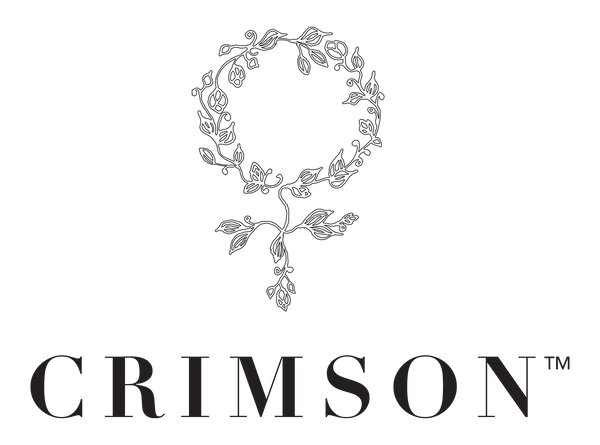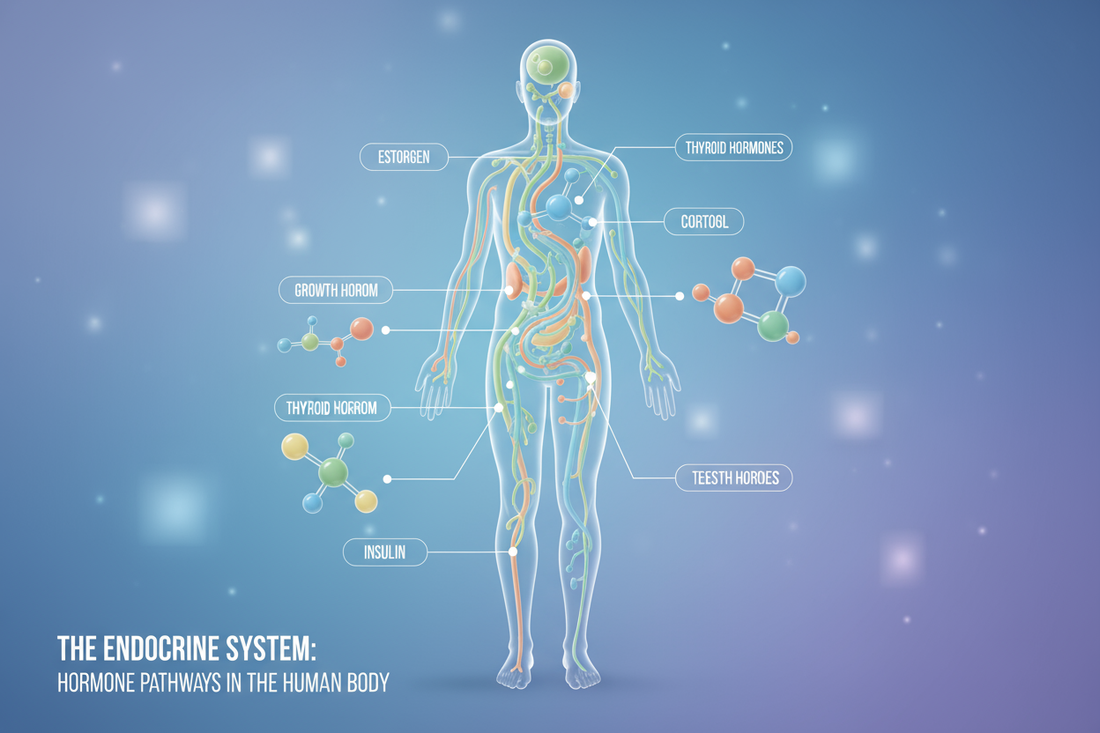
What Is Endocrine Disruption And Its Health Effects
Share
Think of your body as a finely tuned orchestra. Your hormones are the conductors, sending out precise signals to make sure everything from your mood to your menstrual cycle runs in perfect harmony. Endocrine disruption is what happens when outside chemicals barge in and start messing with the music, creating chaos in your body's delicate hormonal balance.
Your Body's Orchestra and The Chemicals That Interfere

At the very heart of how you feel and function every day is the endocrine system. This is a whole network of glands that produce and release hormones. These hormones are like little messengers that travel through your bloodstream, telling different parts of your body what to do and when. They're in charge of everything from your growth and metabolism to your sleep and reproductive health.
When this system is working as it should, it's a beautiful symphony. Your body knows exactly when to release certain hormones to manage stress, hunger, or the complex rhythm of your period. (If you want to dive deeper into that, we've broken down the four distinct phases of the menstrual cycle in another guide).
The Impostor Conductors
So, where does endocrine disruption fit into this picture? It happens when certain man-made chemicals, known as Endocrine-Disrupting Chemicals (EDCs), get into your body. You can picture them as impostor conductors who sneak into the orchestra pit.
These impostors look and act just similar enough to your natural hormones that they can trick your body. They start giving out the wrong instructions, telling your cellular musicians to play too loud, too soft, or at completely the wrong time. This interference can throw your entire hormonal symphony out of tune, leading to a whole host of health concerns.
An estimated 1,000 or more man-made chemicals are thought to have endocrine-disrupting effects. They can be found in everyday items like plastics, personal care products, and even food packaging, which makes exposure a pretty common part of modern life.
A Local Concern in New Zealand
This isn't just some abstract scientific concept; it's incredibly relevant to our health and wellbeing right here in Aotearoa. EDCs are hiding in plain sight in many products we use daily, from our cosmetics to our cleaning supplies.
While local research is still catching up, the chemicals causing harm overseas are the same ones used here.
There are a growing number of studies that highlight how important it is for us to be aware and make conscious choices—from the food we eat to the period products we choose.
How These Chemicals Disrupt Your Hormonal Balance
So, how do these chemical impostors manage to create so much chaos in our bodies? Endocrine-disrupting chemicals, or EDCs, are masters of disguise and sabotage. They throw your hormonal systems out of whack in a few particularly clever ways, messing with the critical messages your body sends and receives every second of the day.
To really get what’s happening, we don’t need a complicated science lesson. Instead, think of it in simpler terms. EDCs generally cause trouble by either mimicking your hormones, blocking them, or meddling with how they’re made and broken down.
This infographic gives a great visual summary of the three main ways they interfere.
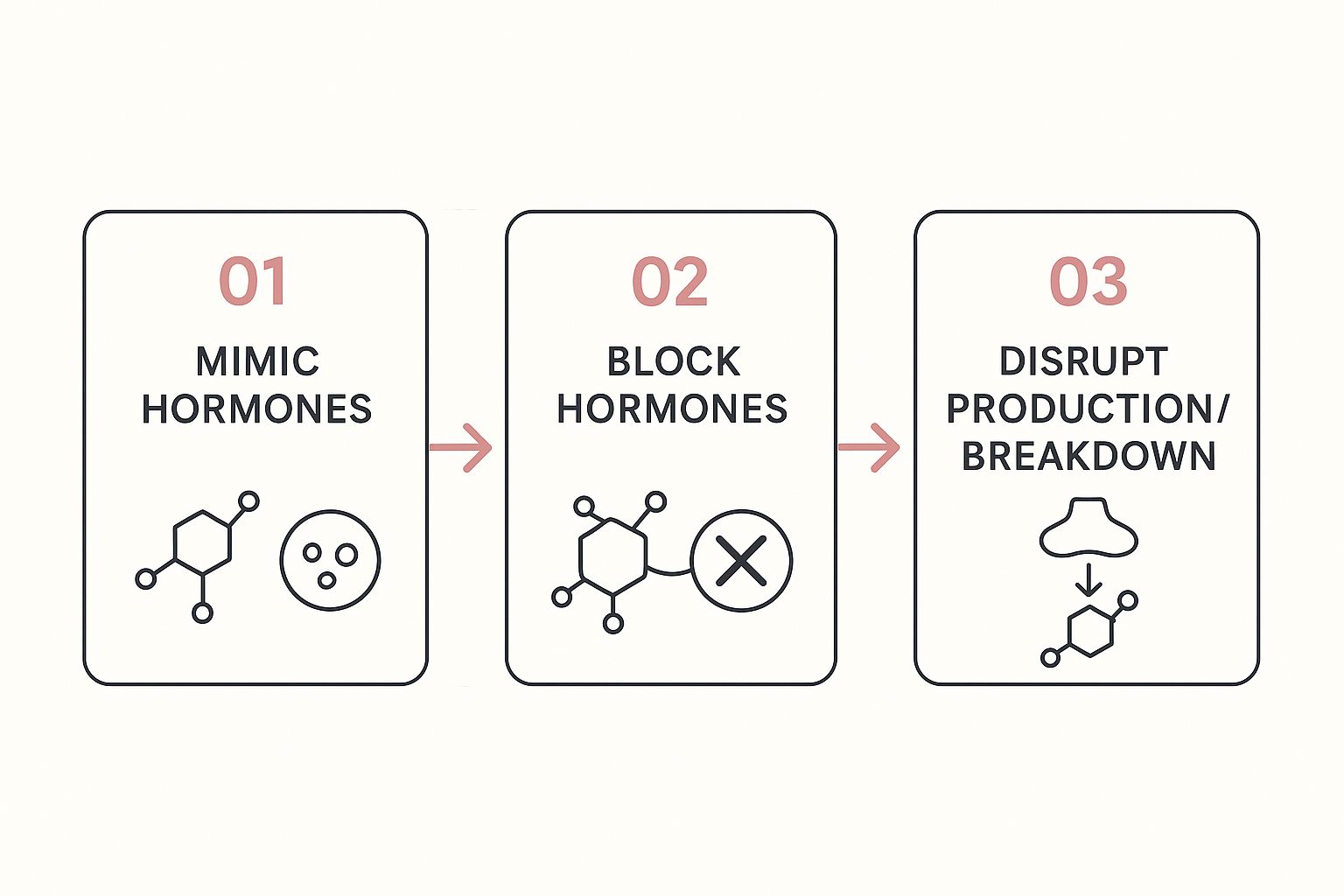
As you can see, each pathway creates a unique set of problems for your body's natural rhythm.
They Mimic Natural Hormones
Think of your hormones as keys, and the cells in your body as having specific locks, called receptors. When the right key—say, oestrogen—fits into its matching lock, it tells the cell what to do, like helping regulate your menstrual cycle.
Some EDCs have a molecular shape so similar to our natural hormones that they can actually fit into these locks.
It’s a bit like a stranger having a copy of your house key. They can let themselves in and start messing with things, even when you're not there. These impostor chemicals trick your body into kicking off processes it shouldn't be, leading to hormonal overstimulation.
They Block Real Hormones
Other EDCs work differently. Instead of unlocking the door themselves, they basically jam the lock so your real key can’t get in. They bind to the cell's receptor but don't actually send a signal. They just sit there, taking up space.
This means your natural hormones, which are circulating and trying to do their jobs, can't deliver their vital messages. It's like a crucial text that never gets delivered because there's no signal. This blockage prevents important bodily functions from getting the green light, which can lead to deficiencies.
They Disrupt Hormone Production and Breakdown
Finally, some EDCs don’t even bother with the keys or locks. They go straight to the source and interfere with the entire hormone lifecycle. They can disrupt the glands responsible for making hormones, like your thyroid or ovaries, causing them to produce too much or too little.
They can also meddle with how your body breaks down hormones once they've done their job. Imagine a factory where the production line is being sabotaged, and at the same time, the recycling plant out back has been shut down. The result is a total imbalance—either a shortage or an overload of certain hormones, both of which can cause serious health problems.
Common Endocrine Disruptors Hiding In Plain Sight
Now that we have a better handle on how these chemical impostors work, you’re probably wondering where they’re actually hiding. The truth is, endocrine disruptors are found in a surprising number of everyday things, many of which we use without a second thought.
The goal here isn't to cause panic. It’s about building awareness so you can make informed choices for yourself and your whānau.
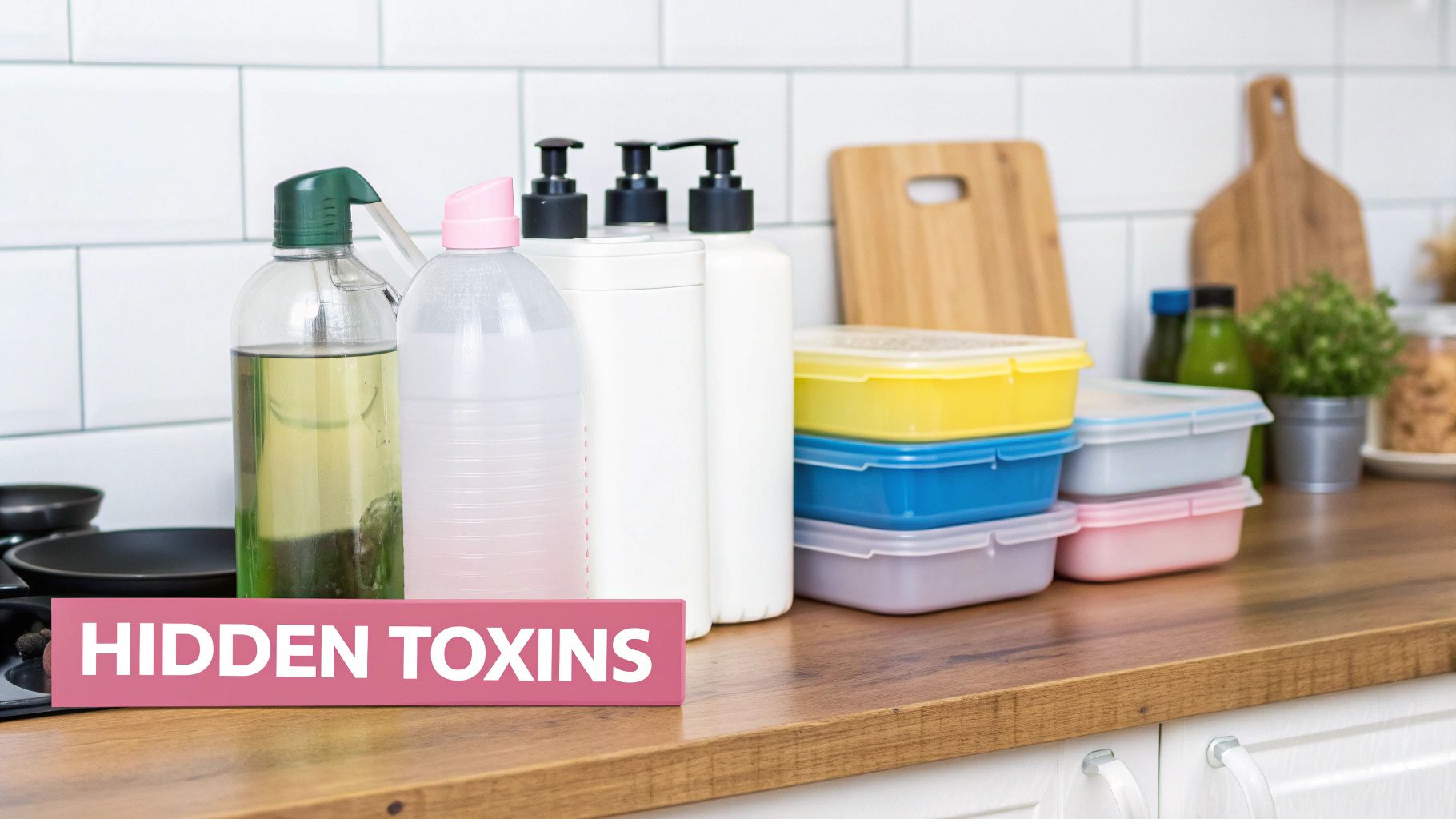
Let's shine a light on some of the most common culprits you might find around your home. Understanding what they are and where they live is the first, most powerful step toward reducing your exposure.
BPA and Other Bisphenols
Bisphenol-A (BPA) is probably one of the most well-known endocrine disruptors. It’s a chemical used to harden plastics, giving them that durable, clear quality we see so often. For years, it was a key ingredient in everything from reusable water bottles and food containers to the protective lining inside canned foods.
While many products now proudly sport a “BPA-free” label, it pays to be cautious. Some manufacturers have simply swapped it out for other bisphenols, like BPS or BPF, which emerging research suggests may have similar hormone-disrupting effects.
The big concern with these chemicals is their ability to mimic oestrogen. They can essentially trick your body into thinking it has more of this hormone than it actually does, potentially interfering with everything from your menstrual cycle to your overall reproductive health.
Phthalates In Fragrances and Soft Plastics
Ever wondered how a lotion holds its scent for hours, or how a plastic toy can be so soft and bendy? The answer is often phthalates (pronounced THAL-ates). These chemicals are everywhere.
You'll bump into them in:
- Scented products: Perfumes, air fresheners, and fragranced lotions often use phthalates to make their scent last longer.
- Soft plastics: Think vinyl flooring, shower curtains, and some children's toys.
- Cosmetics: Nail polish and hairspray frequently contain phthalates to improve their texture and staying power.
Because they're so widespread, phthalates are one of the most common EDCs we encounter daily. They've been linked to a number of health issues, particularly around reproductive development. This is a key reason why it's so important to understand the connection between endocrine disruption and period products, as these items are used so intimately.
Parabens In Personal Care Products
Flip over your shampoo bottle, conditioner, or face moisturiser, and you might spot ingredients like methylparaben or propylparaben on the label. Parabens are preservatives used to stop bacteria and mould from growing in our favourite cosmetics and personal care items.
While they do a great job of extending a product's shelf life, parabens can also be absorbed right through the skin. Much like BPA, they have a weak oestrogen-mimicking effect, adding to the overall chemical burden your body has to manage.
This is a great example of where a small, conscious choice can make a real difference. Knowing what’s in your products helps you take back a little bit of control.
Common Endocrine Disruptors And Where To Find Them
| Chemical Name | Commonly Found In | Potential Health Concerns |
|---|---|---|
| BPA & other Bisphenols | Plastic bottles, food cans, thermal paper receipts | Mimics oestrogen, impacts reproductive health, thyroid function |
| Phthalates | Fragranced products, vinyl, soft plastics, cosmetics | Reproductive system development, hormone disruption |
| Parabens | Shampoos, conditioners, lotions, makeup (preservative) | Weakly mimics oestrogen, potential reproductive effects |
| Pesticides (e.g., Atrazine) | Conventionally grown produce, contaminated water | Can alter hormone production, linked to reproductive issues |
| PFAS ("Forever Chemicals") | Non-stick cookware, stain-resistant fabrics, food packaging | Thyroid disease, developmental effects, immune system issues |
Remember, total avoidance is nearly impossible, but being aware of these key players is the first step in making swaps that work for you and lessen your daily exposure.
Connecting Endocrine Disruption To Your Health
Understanding the science is one thing, but figuring out how it connects to our own health is what really brings it home. When these chemical impostors get in the way of our body’s finely tuned hormonal orchestra, the effects can show up in very real ways, from our monthly cycles to our long-term wellbeing.
The link between endocrine-disrupting chemicals (EDCs) and our health is a huge area of scientific focus right now. This is especially true for conditions that are deeply tied to hormonal balance, which can be particularly sensitive to outside interference.
Our goal here is to walk you through these connections in a clear, supportive way. It's about giving you the information to understand the potential impacts without causing unnecessary worry. Knowledge is power, after all, and being informed is the first step in advocating for your own health.
Your Menstrual Cycle and Reproductive Wellbeing
For anyone who menstruates, hormonal harmony is everything. Your cycle is built on a precise rhythm of hormones like oestrogen and progesterone rising and falling. When EDCs that mimic oestrogen enter the picture, they can throw this delicate dance completely off-balance, which can contribute to some of the most common period troubles.
This kind of hormonal interference has been linked to a range of reproductive health issues.
- Irregular Cycles: By messing with normal hormonal signals, EDCs might be a factor in periods that are unpredictable, unusually heavy, or frustratingly absent.
- Fertility Challenges: Research is pointing to a strong link between exposure to certain EDCs and difficulties with fertility for both men and women. These chemicals can impact everything from ovulation to sperm quality.
- Hormone-Sensitive Conditions: The hormonal landscape is a key player in conditions like Polycystic Ovary Syndrome (PCOS) and endometriosis. While the causes are complex, exposure to EDCs is being looked at as a potential factor that could worsen symptoms or influence their development.
One major study found that women with higher combined exposure to certain EDCs started menopause 1.9 to 3.8 years earlier than those with lower exposure. It suggests these chemicals could actually shorten a person's reproductive lifespan by depleting their ovarian reserves too soon.
Why Sensitive Life Stages Matter
Exposure to EDCs can be a problem at any time, but it’s a particular concern during sensitive windows of development when the body is going through rapid hormonal changes. Puberty is a perfect example.
During the teenage years, the endocrine system is working overtime to guide the body’s transition into adulthood. Bringing hormone-disrupting chemicals into the mix during this critical period can interfere with normal development in ways that might have lasting effects.
This is also a time when many of us are figuring out our period care routines. Choosing products made with clean, organic materials, like our digital (non-applicator) tampons, is one simple way to reduce exposure during these formative years. It’s a small choice that supports personal health and also connects to bigger issues like period equity in New Zealand, making sure everyone has access to safe products. Understanding what is endocrine disruption empowers us to make these conscious choices for our long-term wellbeing.
So, what’s being done to manage all these endocrine-disrupting chemicals? Here in New Zealand, we have our own way of handling things, but it’s a system with some unique challenges.
The main piece of legislation on the table is the Hazardous Substances and New Organisms (HSNO) Act. Think of it as our frontline defence, the tool we use to assess the risks of chemicals before they get the green light for use in the country. It’s the reason harmful pesticides like DDT are banned here, so it definitely has its strengths.
The Problem with Proving Harm
But here's where it gets a bit tricky. The HSNO Act is built on a simple but challenging principle: you need solid scientific proof that something is harmful before it can be restricted.
Under this framework, chemicals that show endocrine-disrupting traits are considered toxic. The catch is that regulators have to balance a chemical’s supposed benefits against its potential harm, and that decision leans heavily on clear scientific evidence. If the evidence isn't strong enough, a substance might still be approved. You can get a sense of the official process in this overview of the HSNO Act.
This "innocent until proven guilty" approach means we often rely on research from overseas, as there isn’t a huge amount of specific, New Zealand-based study on every single chemical. This can create gaps in our local understanding, making it harder to act on a chemical that’s raising red flags internationally but doesn't have the NZ-specific data to back it up.
This highlights a really important point: while our regulatory bodies are working to protect us, the wheels of regulation turn slowly. It’s a powerful reminder that our personal choices are one of the most effective tools we have for managing our own exposure.
Why Your Daily Choices Are So Powerful
The regulatory scene is just one part of the picture. When we think about things like the common struggles people face with their periods and the ongoing conversation around period equity in New Zealand, it’s clear that individual actions and awareness are incredibly powerful.
Choosing products with transparent, simple ingredients—like digital (non-applicator) tampons made from certified organic cotton—is a direct, immediate way to lighten your personal chemical load. It’s a proactive step that puts you back in the driver’s seat, working alongside the slower, broader efforts of national research and regulation.
Simple and Practical Steps to Reduce Your Exposure
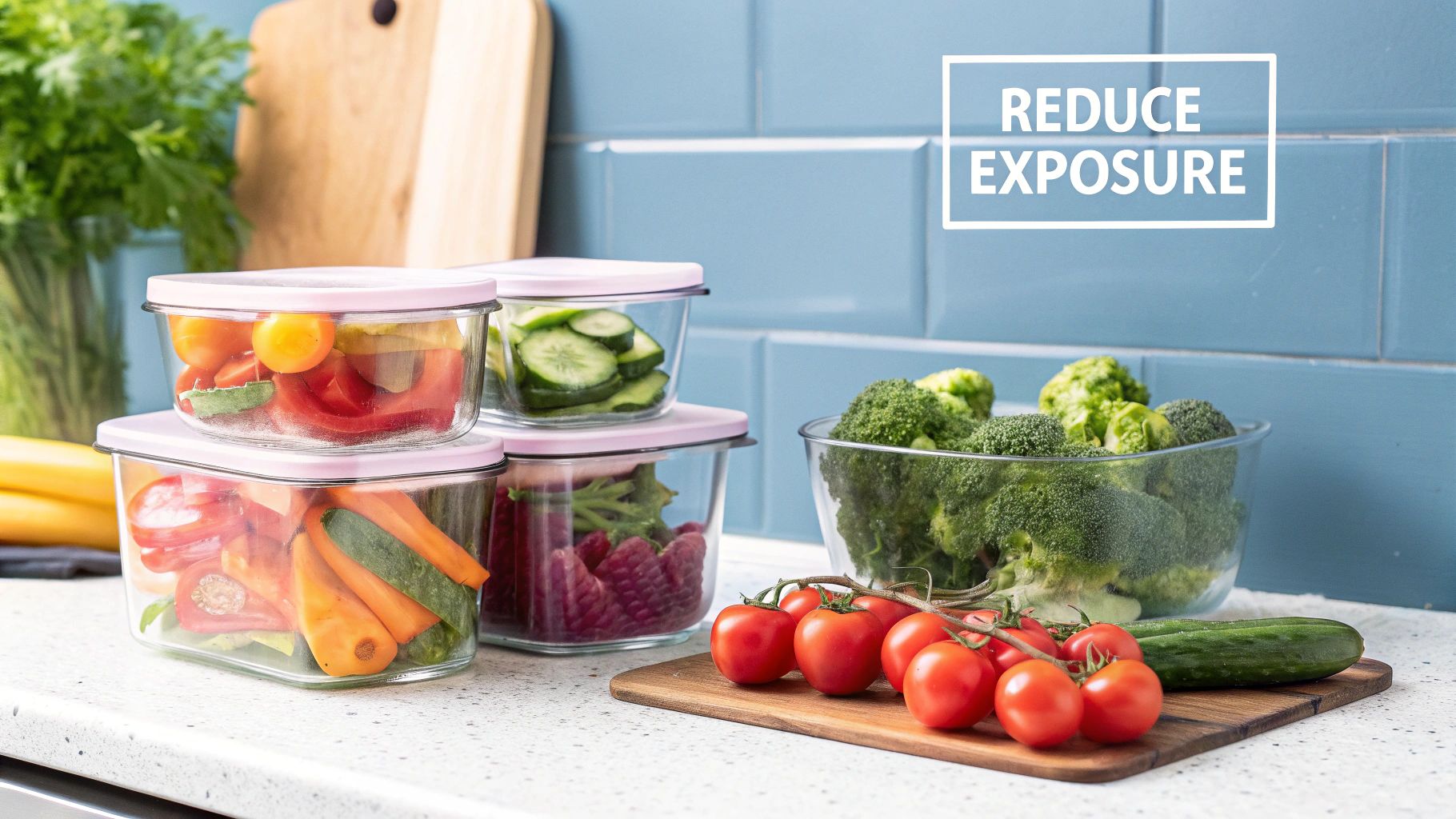
Learning about what is endocrine disruption can feel a bit overwhelming, but the most important part is feeling empowered to make a change. The great news is, you don’t need a complete lifestyle overhaul to reduce your daily exposure. It’s all about making small, mindful swaps that really add up over time.
Focusing on simple, consistent changes is what makes the biggest difference to your long-term health and hormonal balance. A great place to start is by looking at what you bring into your home and put into your body.
It's not about achieving perfection, but about making progress. Every small, informed choice you make helps to lower your body's overall chemical load, which is a powerful step in the right direction.
Start In Your Kitchen
Your kitchen is a fantastic place to begin. We know that endocrine-disrupting chemicals can leach from packaging into our food, so shifting how we shop and store things can have a real impact.
Here are a few easy ideas to get you started:
- Choose Fresh and Whole: Opt for fresh, unpackaged fruits and vegetables whenever you can. It’s a simple way to cut down on plastic.
- Switch Your Containers: Swap out your plastic food containers for glass or stainless steel alternatives. This is especially important for storing leftovers or hot foods.
- Rethink Canned Goods: Try to choose products sold in glass jars or cartons instead of cans, as many can linings contain bisphenols.
Be Mindful Of Personal and Home Care
From your bathroom shelf to the cleaning cupboard, so many everyday products contain hidden EDCs like phthalates and parabens. If you want to dive deeper, especially for the most vulnerable members of your family, adopting baby-safe cleaning practices is a great resource for everyone.
An easy swap is to look for products labelled ‘fragrance-free’ to avoid phthalates, and quickly check the ingredient lists on your cosmetics and lotions for parabens.
The choices we make for our period care are also a meaningful step. Opting for products made from certified organic cotton, like our digital (non-applicator) tampons, ensures the materials you use are free from pesticide residues and other unwanted chemicals. If you’re curious about product safety, we cover this in our guide exploring if tampons are safe to use.
Making these conscious choices is especially important here in New Zealand. Industrial effluents are a significant potential source of endocrine disrupting compounds, with untreated wastewater carrying these chemicals into our precious ecosystems. A review from the Institute of Public Health and Forensic Science highlights that the scale of this problem is still undefined, which makes taking personal action even more vital. You can find out more about these local challenges in their full environmental health report.
Common Questions About Endocrine Disruption
It's completely normal to have questions when you first start digging into the world of endocrine disruptors. It’s a big topic! Let's clear up a few of the most common ones so you can feel more confident about the choices you make.
Are 'Natural' or 'Organic' Products Always Free from Endocrine Disruptors?
Not necessarily, but choosing GOTS certified organic is a huge step in the right direction. When a product is certified organic, it means it was grown and made without synthetic pesticides, many of which are known EDCs. This is one of the best ways to cut down your exposure from what you eat.
The word 'natural', however, isn't regulated. It can mean anything, so it’s no guarantee a product is free from disruptive chemicals. The best thing to do is read the labels, look for a short and simple ingredient list, and stick to trusted certifications like ‘certified organic’ wherever you can.
Can My Body Get Rid of Endocrine Disruptors on Its Own?
Yes, your body has a brilliant built-in detox system, with your liver and kidneys doing most of the heavy lifting to filter out and remove foreign chemicals. But how well they work depends on the specific chemical and the amount you’re exposed to.
Some EDCs pass through your system fairly quickly. Others, however, are fat-soluble, which means they can build up in your body’s fatty tissues over time. If you’re constantly exposed, even to low levels, it can start to overwhelm your body’s natural defences. Supporting your body with a healthy diet is great, but reducing your exposure in the first place is always the most powerful strategy.
Key Takeaway: Your body is a detox powerhouse, but the best defence is to lighten its load by reducing the amount of endocrine disruptors it has to deal with.
Is It Possible to Completely Avoid All Endocrine Disruptors?
Realistically, in our modern world, avoiding every single EDC is pretty much impossible. They’re just too widespread. But the goal isn’t perfection—it’s about making smarter, more conscious choices.
Things like filtering your water, choosing fresh whole foods over processed ones, and being mindful of your personal care and period products can dramatically lower your overall exposure. Every small change you make reduces the chemical burden on your body, and that’s an empowering step towards protecting your long-term health and wellbeing.
At Crimson Organic, we believe managing your period shouldn't add to your body's burden. Our certified organic cotton tampons are free from harmful chemicals, giving you peace of mind with every cycle. Make a simple, powerful choice for your health by exploring our range of organic period care today at https://crimsonorganic.co.nz.
